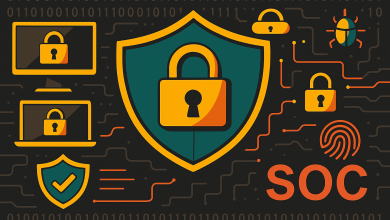
In the high-stakes world of cybersecurity, organizations are under constant pressure from ever-evolving threats, regulatory mandates, and board-level expectations. Yet despite substantial investment in technologies and talent, breaches and compliance failures continue to rise. This paradox exposes a fundamental truth: cybersecurity success depends less on the latest tool or headline threat and more on operational maturity—the discipline of repeatable, business-aligned processes that enable effective risk management.
Why Most Cybersecurity Programs Fail
The biggest risk to organizations isn’t the sophistication of cybercriminals—it’s the absence of mature, repeatable processes. Too often, companies treat cybersecurity as a reactive checklist: deploying products, responding to incidents, and scrambling to meet audit requirements. This approach leads to silos, tool sprawl, security fatigue, and inconsistent risk coverage.
Most organizations lack:
-
Clear visibility into their IT operations and security posture
-
Integrated processes that align security with business objectives
-
Continuous monitoring and measurement of cybersecurity effectiveness
-
A culture of accountability and leadership engagement
Without these foundational elements, cybersecurity efforts become fragmented and fail to deliver real protection or resilience.
Operational Maturity: A Strategic Imperative
Operational maturity means embedding security into daily IT and business operations through standardized processes, continuous improvement, and data-driven decision-making. It requires moving beyond checkboxes to focus on outcomes: reducing risk, enabling compliance, and supporting business continuity.
This maturity is the “ultimate backstop” for cybersecurity. It ensures that investments in Zero Trust architectures, microsegmentation, endpoint detection, and other tools are effective because they operate within a coherent framework.
What Does Operational Maturity Look Like?
-
Alignment with Business Goals: Security programs must support business priorities and risk tolerance. This alignment ensures resources focus on protecting critical assets and meeting compliance without unnecessary overhead.
-
Repeatable Processes: From incident response to patch management, processes should be documented, measurable, and continuously improved.
-
Continuous Monitoring: Real-time visibility into security events, system health, and compliance status enables proactive management rather than reactive firefighting.
-
Leadership Engagement: Executive sponsorship and clear communication channels reinforce accountability and strategic direction.
-
Culture of Security: Empowering staff at all levels to understand their role in security creates resilience beyond the IT department.
Zero Trust is Not a Product
The term “Zero Trust” is often misunderstood as a technology product or a checklist item. In reality, Zero Trust is an operating model—one that requires a mature cybersecurity program built on strong identity verification, least privilege access, microsegmentation, and continuous monitoring.
Many organizations fail by trying to bolt on tools without the operational foundation to integrate and sustain them. Without operational maturity, Zero Trust strategies become costly, complex, and ineffective.
How to Build Operational Maturity
-
Assess Your Current State: Identify gaps in processes, tools, and culture using maturity models and risk assessments.
-
Simplify and Standardize: Eliminate redundant tools and streamline workflows to reduce complexity and increase clarity.
-
Align IT and Security Operations: Break down silos to enable seamless collaboration between IT operations and cybersecurity teams.
-
Implement Automation Where Possible: Automate compliance checks, alert triage, and patch deployment to reduce manual errors and response times.
-
Measure and Communicate Progress: Use dashboards and metrics to demonstrate improvements to leadership and auditors.
-
Train and Empower Your Teams: Foster ongoing education and awareness to maintain a security-first mindset.
Cybersecurity is not merely a technology challenge; it’s an operational and strategic discipline. Organizations that focus on operational maturity—aligning processes, people, and technology with business goals—will not only reduce risk but also gain a competitive advantage. They move from reacting to threats with fear and uncertainty to operating with confidence and resilience.
Scott Alldridge, CEO of IP Services and author of VisibleOps Cybersecurity, champions this pragmatic, business-driven approach. His extensive experience, proven frameworks, and commitment to measurable outcomes offer a blueprint for transforming cybersecurity from chaos to control.
In a world where hope is no longer a strategy, operational maturity is the key to sustainable cybersecurity success.




